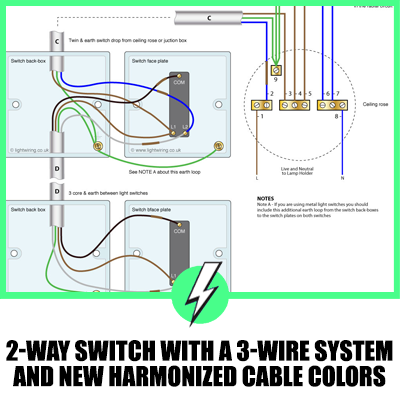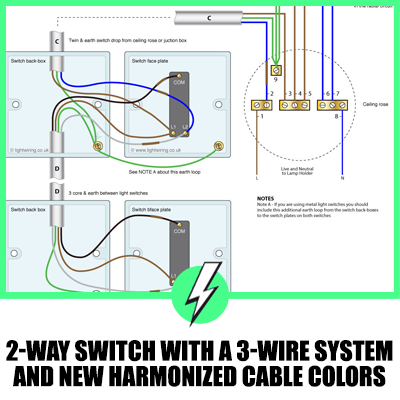How to Install a GFCI Outlet with 4 Wires
Looking to enhance your home’s electrical safety with a simple upgrade?
Adding a GFCI outlet can be your next DIY success story, especially when you’re greeted by 4 wires in the electrical box. Fear not, for this task is less daunting than it appears, and it’s a great step towards modernizing your home’s electrical standards and ensuring safety against shocks.
Embarking on the journey of installing a GFCI outlet with 4 wires might seem complex, but with clear guidance, it’s entirely achievable. This upgrade not only boosts safety but also aligns your home with contemporary electrical practices.
Well, we’ll be going over:
- How can you prepare effectively for this installation?
- What steps are crucial to ensure the power is safely turned off?
- How can you confidently identify and connect the right wires to your new GFCI outlet?
Let’s get started!

Contents
Gather the necessary tools and materials
Before beginning the installation of your GFCI outlet, it’s vital to gather all the necessary tools and materials. Having everything at hand will not only save you time but also ensure a smooth installation process. You’ll need:
- Screwdrivers: A flat-head and a Phillips-head will cover most bases.
- Wire strippers: Essential for preparing your wires for connection.
- Voltage tester: Safety first! Always check for live wires before starting.
- GFCI outlet: Ensure it’s the correct type for your wiring setup.
- Wire nuts: For securely connecting wires together.
- Electrical tape: Provides an added layer of safety to your connections.
This list might seem basic, but each item plays a critical role in the installation process. Remember, safety is paramount when working with electrical systems.
Double-check that your tools are in good condition and that your GFCI outlet meets the necessary standards for your home’s electrical system.
Turn off the power
Before diving into the nerve-centre of your GFCI installation process, ensuring your safety is paramount. You’ll need to turn off the power at the breaker box.
This step is crucial to prevent any electrical shock or accidents while working with the wiring.
Locate your home’s breaker box and flip the switch that controls the power to the outlet you’re replacing.
It’s not always obvious which switch controls which outlet, so if in doubt, turning off the main power is the safest bet.
Once you’ve turned off the power, it’s time for a safety check. Use a voltage tester to confirm there’s no power running to the outlet.
Simply place the tester’s probes into the outlet’s slots. If the tester lights up or beeps, power is still present, and you’ll need to go back and ensure the correct circuit breaker is turned off.
Remember, even when you’re confident the power is off, treat all wires as if they’re live to uphold the highest safety standards during your installation.
Identify the wires
When you’re staring at the 4 wires necessary to install your GFCI outlet, knowing which is which is crucial.
These typically include two line wires, one neutral wire, and one ground wire. The line wires are responsible for bringing power into the GFCI, while the neutral wire completes the circuit back to the power source.
The ground wire, often bare or green, is a safety must, diverting any fault current to earth.
To identify the line and neutral wires, look for the colour coding. In most cases, black or red wires serve as the line, and white is used for neutral.
However, always verify with a voltage tester, as wire colours can sometimes deceive. It’s here, in the identification stage, that most DIY enthusiasts appreciate the subtleties of a GFCI installation.
It’s not just about connecting wires; it’s about understanding their function in the system.
Connect the wires to the GFCI outlet
Once you’ve identified your line, load, neutral, and ground wires, it’s time to connect them to the GFCI outlet.
Starting with the line wires (usually black or red), attach these to the brass screws on the line side of the outlet. It’s crucial you connect these correctly, as they supply the power to the GFCI.
Next, take the white neutral line wire and attach it to the silver screw on the line side. Ensure that your connections are tight and secure to prevent any electrical hazards.
The load wires supply power to additional outlets downstream. If your installation includes these, connect them to the corresponding brass and silver screws on the load side.
Remember, the colour coding is your friend but always double-check with a voltage tester.
Finally, attach the ground wire (usually bare or green) to the green grounding screw. This step is vital for the safety of your electrical system, grounding any fault current.
Properly installed, your GFCI outlet offers enhanced protection against electrical shocks, ensuring the safety of your home and family.
Test the GFCI outlet
After installing your GFCI outlet with the correct connection of 4 wires, it’s crucial to test its functionality to ensure safety and proper operation. Firstly, restore power to the outlet by switching on the circuit breaker.
With the power back on, you’ll notice the GFCI outlet has a test and reset button.
Press the test button. This action should trip the outlet and cut off the power to the outlet sockets, simulating a fault.
If the power doesn’t cut off, there might be an issue with the installation. Verify that all connections are correct and secure.
Next, press the reset button to restore power to the outlet. This step is essential for confirming that the GFCI outlet can be reset and is operational after tripping.
To further ensure that the outlet is working correctly, consider using a plug-in electrical tester. These testers are designed to indicate various wiring faults like open ground, reverse polarity, or no power.
Insert the tester into the GFCI outlet; the results shown will guide you on any further adjustments or verifications needed.
Remember, testing your newly installed GFCI outlet not only validates its operation but significantly enhances the safety of your home’s electrical system.
Conclusion
Successfully installing a GFCI outlet with 4 wires is a significant step towards ensuring your home’s electrical safety. Remember, the final and crucial stage involves testing the outlet to confirm it’s functioning as expected.
By following the steps outlined, you’ll not only safeguard your electrical system but also gain peace of mind knowing you’ve enhanced the safety of your living space.
Don’t overlook the value of using a plug-in electrical tester for an extra layer of fault detection. It’s a straightforward process that bolsters the protective measures in your home.





